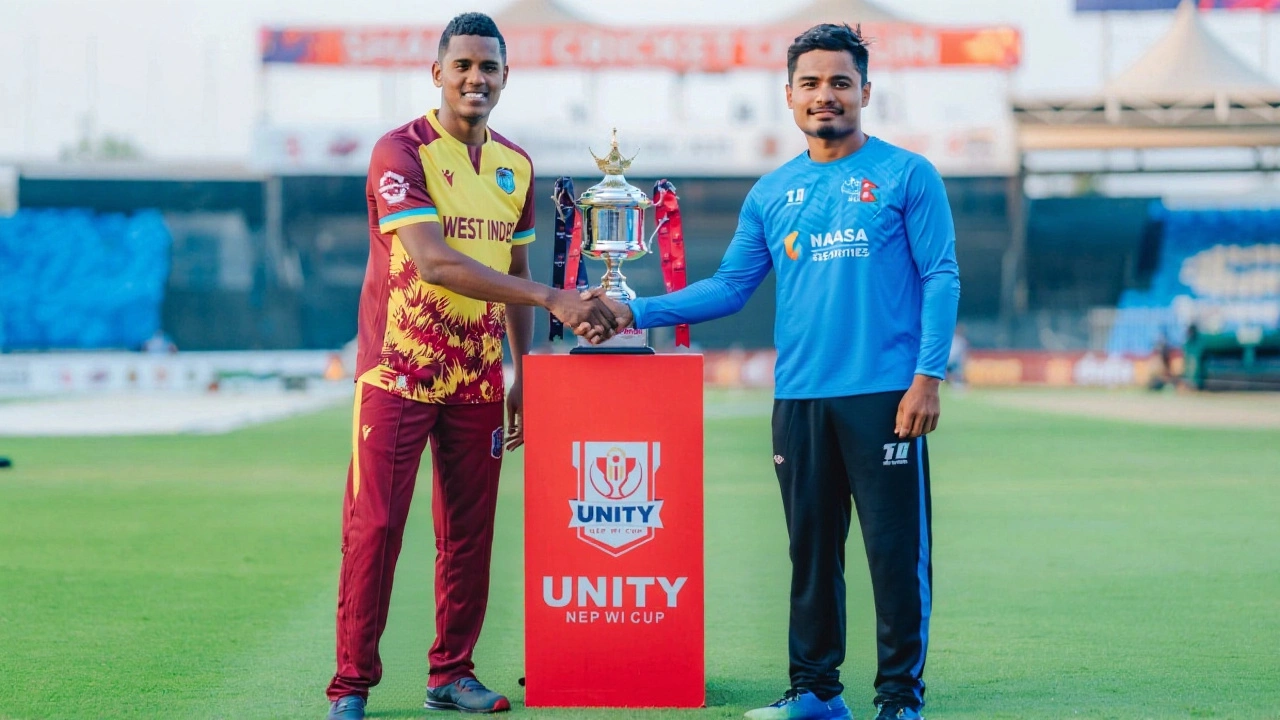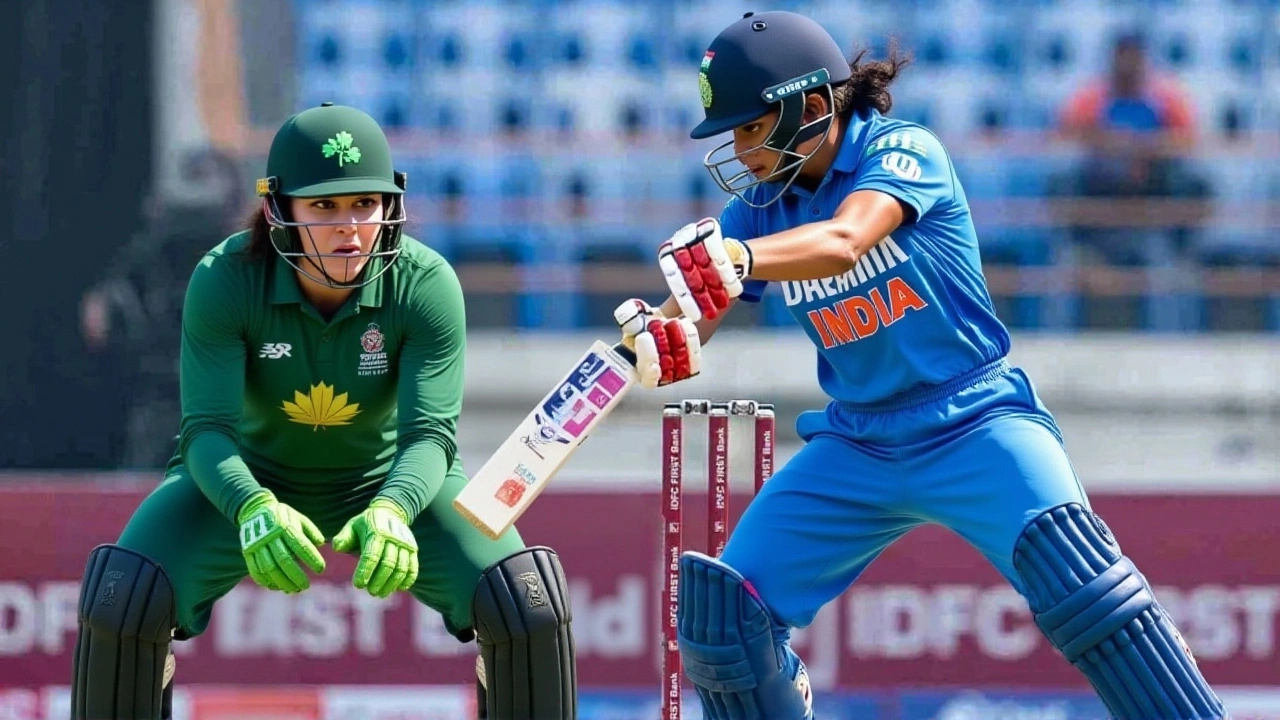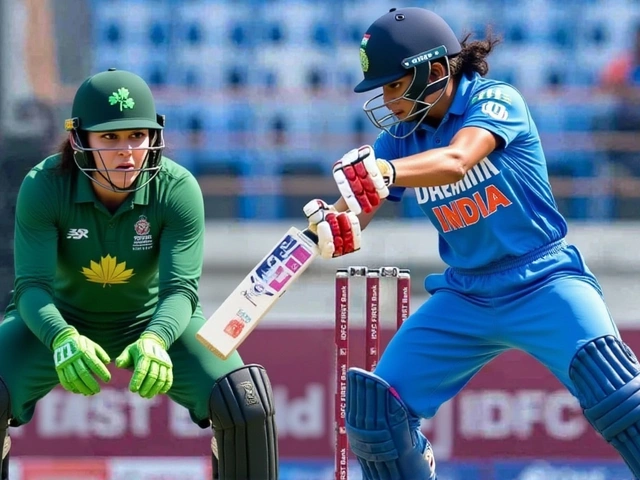On Sunday, September 14, 2025, Australia Women dismantled India Women by 8 wickets with 35 balls to spare in the first ODI of their three-match series at the PCA International Stadium in New Chandigarh. The result wasn’t just a win—it was a statement. Australia chased down 282 with calm precision, leaving India’s bowlers chasing shadows. And while India fought hard, posting 281 for 7, their efforts were overshadowed by a masterclass in run-chasing that felt almost effortless.
India’s innings: Solid start, missed momentum
India Women won the toss and chose to bat, a decision that looked smart early on. Pratika Rawal and Smriti Mandhana stitched together a 100-run opening stand in just 17.3 overs, with both reaching half-centuries. The power play (overs 1–10) was flawless: 55 for 0, no wickets lost, momentum building. By the drinks break in the 13th over, they were 75 for 0. It felt like India might post 320+.
But after that, the innings stalled. The middle order, usually India’s strength, couldn’t accelerate. Harman Deol (50 off 50 balls) provided a spark, but the scoring rate dipped. Radha Yadav (19) and Deepti Sharma (20*) added 30 quick runs at the death, but it wasn’t enough. India finished at 281 for 7—with 10 extras, a sign of inconsistent strike rotation. Their run rate of 5.62 looked respectable, but against Australia’s firepower, it was never enough.
Australia’s chase: A symphony of composure
Australia’s reply began with a jolt: Alyssa Healy, their explosive opener, was out for 27, caught behind off Kranti Goud. But the damage was contained. Enter Phoebe Litchfield—on fire. Her 51 off 44 balls (9 fours) was the perfect counterpunch. Then came the partnership that broke India’s spirit: Beth Mooney and Annabel Sutherland.
Mooney, calm as a surgeon, brought up her 50 in just 45 balls. Sutherland, equally clinical, reached hers in 47. Together, they added 100 runs in 87 balls for the third wicket. No panic. No drama. Just relentless, intelligent cricket. By the 32nd over, Australia were 201 for 2. By the 40th, they needed just 28 runs off 60 balls. The chase wasn’t just on—it was over.
Ellyse Perry retired hurt on 30 with a calf strain, a concern for the series, but Australia didn’t miss a beat. Charani bowled the final over, and on the first ball, the required two runs were struck. The crowd fell silent. The scoreboard read 282 for 2 in 44 overs. Australia had won by 8 wickets, with 35 balls to spare.
Who stood out? The key performers
- Beth Mooney: 77 off 74 balls (6 fours) — the anchor
- Annabel Sutherland: 54 off 51 balls (6 fours) — the accelerator
- Phoebe Litchfield: 51 off 44 balls (9 fours) — the spark
- Pratika Rawal: 45 — solid start, but no follow-through
- Harman Deol: 50 off 50 balls — India’s lone bright spot
Australia’s bowling attack, led by Tahlia McGrath (4-0-33-0), kept India in check during the middle overs. McGrath’s maiden over in the 28th was pivotal, breaking a dangerous partnership. India’s Kranti Goud was the only bowler to break through, dismissing Healy—but even that felt like a lone success in a losing cause.

What the captains said
India captain Harmanpreet Kaur, ever the fighter, stood firm: "We believe we can beat Australia any day." Her words carried grit, but the numbers told a different story. Australia’s chase was the most efficient in recent ODI history against India on home soil.
Alyssa Healy, Australia’s opener and veteran, offered a rare compliment: "This is the most stable Indian team I’ve seen in years." It’s a backhanded compliment, perhaps—but it’s also true. India’s top order is more disciplined than ever. But against Australia’s depth, stability isn’t enough. You need fireworks.
Why this matters
This isn’t just about one match. Australia now lead the series 1-0, and with two ODIs remaining, the momentum is entirely theirs. India’s batting depth was exposed. Their spinners, usually their weapon, were hit for 8.25 runs per over. And Australia? They’ve got three openers who can dominate, a middle order that doesn’t flinch, and a bench that’s deeper than most Test teams.
For India, the pressure mounts. Their next game is in a week, and if they don’t fix their middle-order slowdown, the series could be over before the final match. For Australia, this win confirms their status as world champions-in-waiting. They’re not just playing to win—they’re playing to intimidate.

What’s next?
The second ODI is scheduled for September 18 in Bengaluru, a venue where Australia have historically struggled. But this isn’t the same team. The confidence is different. The execution is sharper. India will need to bring their A-game—or risk being swept.
Historical context: Australia’s dominance
Australia Women have won 11 of their last 12 ODIs against India, dating back to 2020. Their last series loss to India? 2018. Since then, they’ve won three consecutive bilateral series on Indian soil. This match was the seventh time in the last decade Australia have chased down 280+ in ODIs against India—and they’ve won every single one.
India’s best chase against Australia? 265 in 2021, in Canberra. They lost. Australia’s best chase against India? 300 for 3 in 43 overs, in 2023, in Perth. They won. The trend isn’t random. It’s structural.
Frequently Asked Questions
How did Australia’s chase compare to previous high-scoring chases against India?
Australia’s 282 for 2 in 44 overs is the third-fastest successful chase of 280+ against India in ODI history. Only their 300 for 3 in 43 overs (2023) and 291 for 2 in 42.4 overs (2021) were quicker. The key difference this time? They did it in India, on a pitch that offered some turn, and without needing a 100-run final partnership. This was a controlled demolition.
Why did India’s middle order struggle despite strong openers?
India’s top order scored 154 runs in the first 27 overs, but the next five batsmen added only 127 runs in the remaining 23 overs. The problem? Lack of rotation. After Mandhana’s dismissal, the strike rate dropped from 7.5 to 5.1. Harman Deol’s 50 came at 6.0, but she faced 40% of the balls in that phase. No one else stepped up. Australia’s field placements and disciplined line-and-length bowling exploited that.
Is Ellyse Perry’s injury a major concern for Australia?
Yes. Perry’s calf strain is a red flag. She’s Australia’s most experienced all-rounder and a key finisher. Her retirement hurt the momentum, but Mooney and Sutherland covered it. Still, if she misses the next match, Australia lose a vital tactical option—especially in spin-friendly conditions. Her absence could force a reshuffle, possibly promoting Litchfield to number three.
What does this result mean for the ICC Women’s Championship standings?
Australia now lead the ICC Women’s Championship table with 12 points from 4 matches. India sit at 8 points, tied with South Africa. With only 6 matches left in the cycle, this series is critical for India’s World Cup qualification. A 3-0 loss would be their worst ever against Australia in an ODI series—and likely cost them automatic qualification.
How did the pitch play in Chandigarh?
The PCA pitch was flat but slightly slow, with some grip for spinners in the second innings. India’s 281 was considered a good total here—until Australia came out. The ball stayed low, making boundaries harder to hit early on. But Australia’s batters used their feet brilliantly against the spinners, especially Sutherland, who targeted the off-side gaps. The pitch didn’t favor India—it favored composure, and Australia had it in spades.
What’s the significance of Beth Mooney’s performance?
Mooney’s 77 wasn’t just about runs—it was about timing. She faced 74 balls and hit only 6 fours, meaning she scored 47 runs from non-boundary shots. That’s elite run-construction. In a high-pressure chase, she didn’t try to dominate; she outlasted. This was her 12th ODI fifty against India, more than any other batter in history. She’s become India’s nightmare—and Australia’s most reliable weapon.





